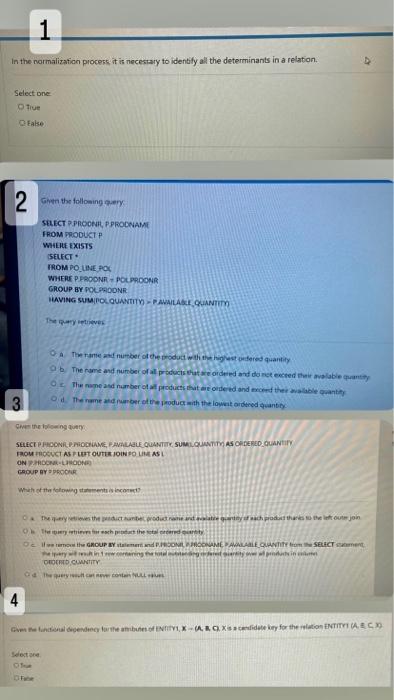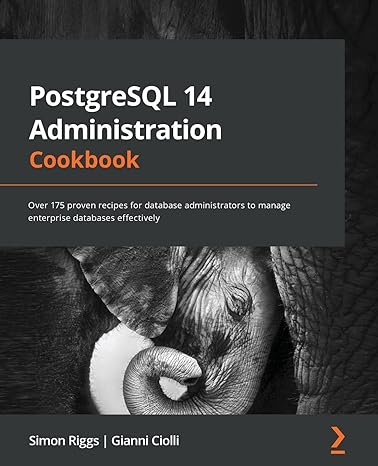Question
Questions: 1.. In the normalization process, it is necessary to identify all the determinants in a relation. Select one: True .False 2.. Given the following


Select one:
True
.False
2.. Given the following query:
SELECT P.PRODNR, P.PRODNAME FROM PRODUCT P WHERE EXISTS (SELECT *
FROM PO_LINE POL
WHERE P.PRODN = POL.PRODNR
GROUP BY POL.PRODR
HAVING SUM(POL.QUANTITY) > P.AVAILABLE QUANTITY)
The query retrieves:
O a.The name and number of the product with the highest ordered quantity.
O b. The name and number of all products that are ordered and do not exceed their available quantity.
c. The name and number of all products that are ordered and exceed their available quantity.
O d. The name and number of the product with the lowest ordered quantity.
3..Given the following query:
SELECT P.PRODNR, P.PRODNAME, P.AVAILABLE QUANTITY, SUM(LQUANTITY) AS ORDERED_QUANTITY FROM PRODUCT AS P LEFT OUTER JOIN PO LINE AS L ON (P.PRODNR=L.PRODNR) GROUP BY P.PRODNR
Which of the following statements is incorrect?
O a. The query retrieves the product number, product name and available quantity of each product thanks to the left outer join.
b. The query retrieves for each product the total ordered quantity.
O c. If we remove the GROUP BY statement and P.PRODNR, P.PRODNAME, P AVAILABLE QUANTITY from the SELECT statement, the query will result in 1 row containing the total outstanding ordered quantity over all products in column 'ORDERED QUANTITY'
O d. The query result can never contain NULL values.
4.. Given the functional dependency for the attributes of ENTITY1, X - (A, B, C), X is a candidate key for the relation ENTITY1 (A, B, C, X)
Select one:
O True
O False
Step by Step Solution
There are 3 Steps involved in it
Step: 1

Get Instant Access to Expert-Tailored Solutions
See step-by-step solutions with expert insights and AI powered tools for academic success
Step: 2

Step: 3

Ace Your Homework with AI
Get the answers you need in no time with our AI-driven, step-by-step assistance
Get Started


